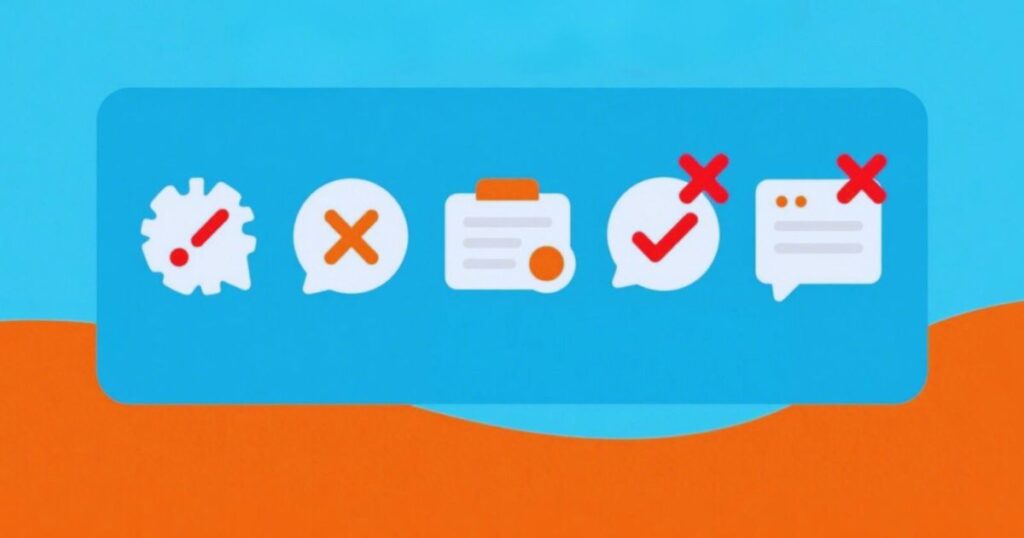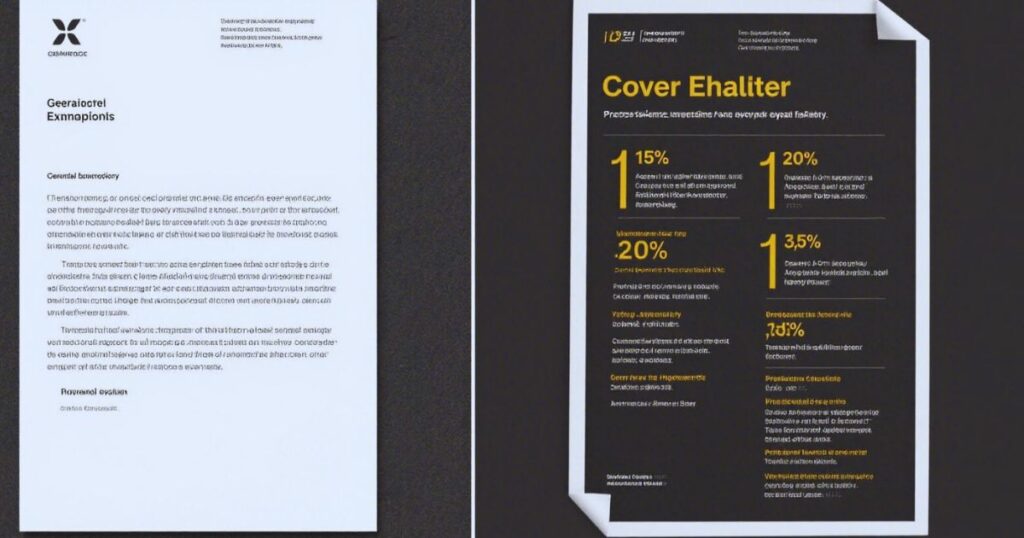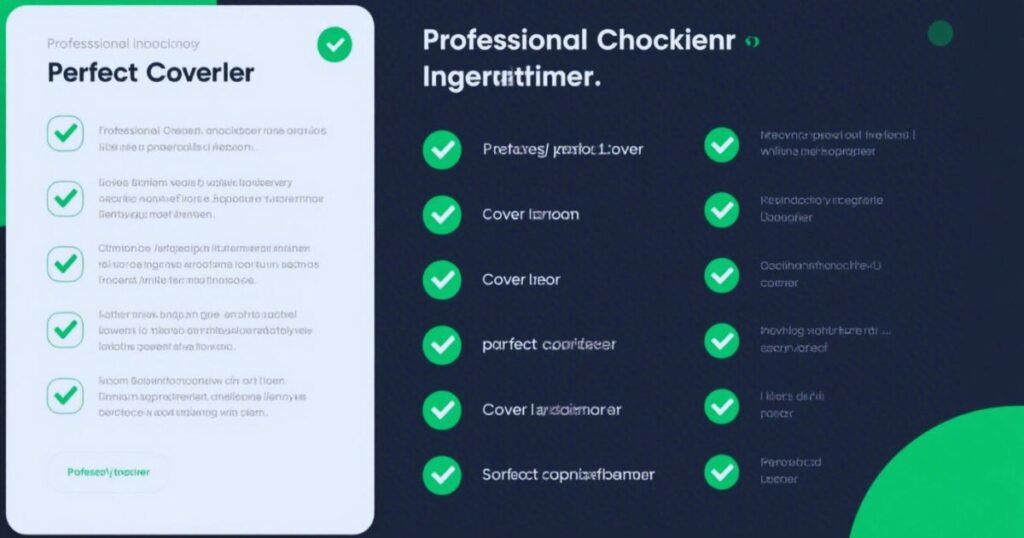Introduction: 7 Mistakes to Avoid in a Cover Letter for an Internship
Your cover letter for an internship application can make or break your chances of landing that dream position. A strong application letter for an internship serves as your first impression with potential employers.
Many Nigerian graduates struggle with writing effective cover letters. They often make common mistakes that hurt their chances. These errors can prevent you from standing out in competitive internship applications.
A well-crafted cover letter for an internship position showcases your personality and enthusiasm. It highlights your relevant skills and experiences. Most importantly, it demonstrates your genuine interest in the company and role.
Companies receive hundreds of applications for each internship position. Your cover letter must grab attention immediately. It should convince hiring managers that you deserve an interview.
The following seven mistakes are surprisingly common among job seekers. Avoiding these pitfalls will significantly improve your application success rate. You’ll learn practical strategies to create compelling cover letters that get results.
Each mistake includes real examples and actionable solutions. These insights will help you write professional, engaging cover letters. Your applications will stand out from the competition.
Ready to transform your cover letter for an internship application? Let’s explore these critical mistakes and their solutions.
Mistake #1: Generic Opening Line in Your Cover Letter for an Internship
Generic opening lines instantly signal lazy application efforts to hiring managers. Starting with “To Whom It May Concern” or “Dear Sir/Madam” shows zero research effort. These outdated greetings make your cover letter for an internship application forgettable.
Employers want to see that you’ve invested time in their company. A personalized greeting demonstrates genuine interest and professionalism. It sets a positive tone for the entire letter.
Generic openings suggest you’re mass-applying to multiple companies. This approach rarely succeeds in today’s competitive job market. Hiring managers can spot copy-paste applications from miles away.
Your opening line is your first chance to make an impression. Don’t waste this opportunity with boring, impersonal greetings. Instead, show that you’ve done your homework about the company.
How to Personalize Your Greeting
Research the hiring manager’s name through LinkedIn or the company website. Check recent press releases or company announcements for staff information. Social media profiles often reveal key personnel details.
If you can’t find a specific name, use targeted alternatives. “Dear Marketing Team” or “Dear Human Resources Department” works better than generic options. These greetings show you understand the company structure.
Call the company directly and ask for the hiring manager’s name. Most receptionists will provide this information willingly. This extra effort demonstrates your commitment to the application.
Company websites often list department heads or team leaders. Look for “About Us” or “Our Team” sections. These pages frequently contain contact information and staff details.
Real-Life Example: A Personalized Greeting vs. a Generic Greeting
Generic Greeting Example: “Dear Sir/Madam, I am writing to apply for the marketing internship position at your company.”
Personalized Greeting Example: “Dear Ms. Johnson, I am excited to apply for the marketing internship position at TechFlow Solutions.”
The personalized version immediately establishes a connection with the reader. It shows you’ve researched the company and identified the right contact person. This attention to detail makes a strong first impression.
The generic version sounds robotic and impersonal. It fails to create any emotional connection with the reader. Hiring managers often skip these applications entirely.
Read Also: 10 Virtual Internship Secrets You Must Know
Mistake #2: Failing to Customize the Cover Letter for an Internship
Sending identical cover letters to multiple companies is a major mistake. Each organization has unique values, culture, and requirements. A generic cover letter for an internship cannot address these specific needs effectively.
Customization shows employers that you’re genuinely interested in their company. It demonstrates that you’ve researched their mission and values. This effort separates you from candidates who take shortcuts.
Generic letters often contain irrelevant information that doesn’t match the role. They may mention skills or experiences that aren’t applicable. This mismatch can actually hurt your chances.
Tailored cover letters allow you to highlight the most relevant qualifications. You can address specific requirements mentioned in the job posting. This targeted approach increases your chances of getting noticed.
Research the Company Before Writing
Visit the company’s website and read their mission statement thoroughly. Understand their core values and business objectives. This knowledge helps you align your letter with their goals.
Check their recent news, blog posts, or press releases. Look for information about new projects or initiatives. Mentioning these details shows you’re current and engaged.
Research the company’s culture through social media platforms. LinkedIn, Twitter, and Instagram often reveal the workplace atmosphere. This insight helps you match their communication style.
Read employee reviews on sites like Glassdoor or Indeed. These platforms provide insider perspectives on company culture. You can reference positive aspects in your letter.
Real-Life Example: Customizing Your Cover Letter
Generic Cover Letter Example: “I am interested in joining your company because it’s a great place to work. I have strong communication skills and am eager to learn.”
Customized Cover Letter Example: “I am drawn to GreenTech Innovations’ commitment to sustainable technology solutions. Your recent solar panel project aligns perfectly with my environmental science background and passion for renewable energy.”
The customized version demonstrates specific knowledge about the company. It connects the candidate’s background to the company’s mission. This approach shows genuine interest and research effort.
The generic version could apply to any company. It provides no specific value proposition. Hiring managers will likely overlook this type of application.
Mistake #3: Overloading Your Cover Letter with Irrelevant Information
Including irrelevant skills or experiences clutters your cover letter for internship applications. Too much unnecessary information distracts from your strongest qualifications. Writing an effective cover letter for an internship requires focus and precision.
Every sentence in your cover letter for an internship should serve a purpose. Irrelevant information takes up valuable space and attention. It may even suggest that you don’t understand the role requirements.
Focus on experiences that directly relate to the internship position. Highlight skills that match the job description requirements. This targeted approach keeps your letter concise and impactful.
Quality always beats quantity in a cover letter for an internship. Three strong, relevant examples are better than ten weak ones. Choose your content carefully for maximum impact.
Focus on the Essentials
Read the job description multiple times and identify key requirements. Match your experiences to these specific needs. Create a clear connection between your background and their expectations.
Use the job posting as your guide for relevant content. If they mention teamwork, include a teamwork example. If they want analytical skills, provide a relevant analytical experience.
Prioritize recent and significant experiences over older or minor ones. Focus on achievements that demonstrate growth and capability. These examples should directly support your application.
Create a skills inventory before writing your letter. List all your relevant experiences, then select the most compelling ones. This process ensures you include only the strongest examples.
Real-Life Example: Relevant Experience vs. Irrelevant Experience
Irrelevant Experience Example: “I have experience in customer service, babysitting, and playing guitar. I also completed a cooking course and enjoy hiking on weekends.”
Relevant Experience Example: “I have experience in customer service, which has developed my communication skills. I also completed a digital marketing course and managed social media for my university’s debate club.”
The relevant example connects each experience to valuable skills. It shows how past activities prepare the candidate for the internship. Every detail supports their application.
The irrelevant example includes personal hobbies that don’t add value. These details waste space and dilute the message. Hiring managers won’t find this information useful.

Mistake #4: Lack of Specific Examples of Achievements in Your Cover Letter for an Internship
Vague statements like “I am hardworking” or “I have good communication skills” lack impact. These generic claims don’t provide evidence of your capabilities. A strong cover letter for an internship needs concrete proof, not empty promises.
Specific examples give your cover letter for an internship credibility and substance. They demonstrate your achievements with concrete evidence. This approach builds trust with potential employers.
Numbers and metrics make your accomplishments more impressive. Quantified results show the real impact of your work. They help hiring managers understand your potential value.
Stories and examples make your cover letter for an internship more engaging. They help readers visualize your capabilities and potential. This storytelling approach creates a stronger emotional connection.
Use Specific, Quantifiable Examples
Replace vague statements with concrete achievements whenever possible. Instead of “improved efficiency,” say “increased project completion rate by 25%.” Numbers provide clear evidence of your impact.
Use action verbs to describe your accomplishments. Words like “achieved,” “implemented,” or “reduced” sound more powerful than passive language. They show you take initiative and get results.
Include relevant metrics from school projects, part-time jobs, or volunteer work. Academic achievements, leadership roles, or community involvement all provide valuable examples. These experiences demonstrate your capabilities.
Focus on results rather than just responsibilities. Employers want to know what you accomplished, not just what you did. Show the positive outcomes of your efforts.
Real-Life Example: Generic vs. Achievement-Based Statements
Generic Statement Example: “I am a hardworking student with good leadership skills. I have experience working in teams and can communicate effectively with others.”
Achievement-Based Statement Example: “I led a team of 8 students to organize our university’s annual fundraiser, raising ₦500,000 for local charities. This project improved my project management skills and taught me to coordinate diverse groups effectively.”
The achievement-based example provides specific evidence of leadership ability. It includes quantifiable results and demonstrates real-world application. This approach builds credibility and trust.

The generic example makes unsubstantiated claims without proof. It sounds like every other application letter. Hiring managers can’t assess the candidate’s true capabilities.
Read Also: 8 Essential Skills You Need Before an Internship in 2025
Mistake #5: Writing Too Much or Too Little in Your Cover Letter for an Internship
Both extremely long and extremely short cover letters can hurt your chances. Long cover letters for an internship application overwhelm busy hiring managers who have limited time. Short letters may seem lazy or disinterested.
The ideal cover letter for an internship strikes a balance between comprehensive and concise. It provides enough detail to showcase your qualifications. Yet it remains focused and easy to read.
Hiring managers typically spend 30 seconds scanning a cover letter for an internship application initially. Your letter must convey key information quickly and effectively. Every word should contribute to your overall message.
Proper length depends on the content quality rather than word count. A well-structured letter with relevant examples is always better. Focus on substance over length requirements.
The Ideal Length for Your Cover Letter
Aim for one page maximum, typically 300-400 words total. This length allows you to cover essential points without overwhelming readers. It forces you to be selective about content.
Use 3-4 paragraphs to organize your main points effectively. Each paragraph should focus on a specific aspect of your application. This structure makes your letter easy to scan.
Include an opening paragraph, 2-3 body paragraphs, and a closing paragraph. The opening should grab attention and state your purpose. Body paragraphs should provide evidence and examples.
Leave white space between paragraphs for better readability. Dense text blocks are harder to read and process. Visual breaks help guide the reader’s eye.
Real-Life Example: Length Comparison
Too Long Example: A 600-word letter that includes unnecessary personal details, repetitive information, and irrelevant experiences. The hiring manager loses interest halfway through.
Too Short Example: A 100-word letter that only states interest without providing any supporting evidence or examples. It fails to demonstrate qualifications or enthusiasm.
Perfect Length Example: A 350-word letter that includes a compelling opening, two focused body paragraphs with specific examples, and a strong closing. It covers all essential points concisely.
The perfect length example provides comprehensive information without overwhelming the reader. It maintains focus while demonstrating genuine interest and qualifications.
Mistake #6: Not Explaining Why You’re a Good Fit for the Internship
Failing to connect your skills with the internship requirements represents a missed opportunity. Your cover letter for an internship should clearly demonstrate your suitability for the role. Generic statements about wanting to learn don’t show specific value.
Employers want to know how you’ll contribute to their organization. They need to see the connection between your background and their needs. This alignment demonstrates your understanding of the role.
Research the internship requirements thoroughly before writing your letter. Identify the key skills and qualifications they’re seeking. Then explicitly address how you meet these requirements.
Show that you understand what the internship involves. Demonstrate knowledge of the company’s challenges and opportunities. This insight proves you’re serious about the position.
Link Your Skills to the Role
Create a clear connection between your experiences and the internship requirements. If they need analytical skills, provide an analytical example. If they want creativity, share a creative project.
Use keywords from the job posting in your letter. This approach shows you’ve read the requirements carefully. It also helps your application pass through automated screening systems.
Explain how your unique background brings value to the role. Highlight experiences that other candidates might not have. This differentiation helps you stand out.
Address specific challenges mentioned in the job posting. Show how your skills can help solve their problems. This problem-solving approach demonstrates your strategic thinking.
Real-Life Example: Good vs. Bad Fit Explanation
Bad Fit Explanation: “I am interested in this internship because I want to gain experience in marketing. I am eager to learn and work hard.”
Good Fit Explanation: “Your internship requires social media management skills, which I developed while increasing my university’s Instagram followers by 40%. My experience with content creation and audience engagement directly supports your digital marketing goals.”
The good fit explanation clearly connects specific skills to role requirements. It provides evidence of capability and demonstrates understanding of the position. This approach shows genuine preparation.
The bad fit explanation focuses on the candidate’s needs rather than the company’s. It provides no evidence of relevant skills or understanding. Hiring managers want to know what value you bring.
Mistake #7: Forgetting to Proofread Your Cover Letter for an Internship
Spelling mistakes, grammatical errors, and poor formatting can instantly disqualify your application. These errors suggest carelessness and a lack of attention to detail. A professional cover letter for an internship demands high communication standards.
A single typo can undermine your entire cover letter for an internship application. It creates doubt about your professionalism and competence. First impressions matter significantly in hiring decisions.
Proofreading shows respect for the employer and the application process. It demonstrates your commitment to quality work. This attention to detail reflects your professional standards.
Technology offers helpful tools, but human review remains essential. Automated spell-checkers miss context-specific errors. Manual proofreading catches subtle mistakes that software overlooks.
Proofreading Tips for Perfection
Read your letter aloud to catch awkward phrasing and errors. Your ears often catch mistakes that your eyes miss. This technique helps identify unclear or confusing sentences.
Use grammar checking tools like Grammarly or Hemingway Editor. These programs catch common mistakes and suggest improvements. They also help improve readability and clarity.
Ask a trusted friend or mentor to review your letter. Fresh eyes spot errors you might miss. They can also provide feedback on clarity and impact.
Take a break before proofreading your final draft. Return to it with a fresh perspective after several hours. This distance helps you catch mistakes more effectively.
Real-Life Example: Before vs. After Proofreading
Before Proofreading: “I am interested in you’re internship program. I have relevant experience in marketing and strong communication skills. I would be grateful for the opportunity to contribute to your team.”
After Proofreading: “I am interested in your internship program. I have relevant experience in marketing and strong communication skills. I would be grateful for the opportunity to contribute to your team.”
The corrected version eliminates spelling and grammatical errors. It presents a professional image that builds confidence. This attention to detail reflects positively on the candidate.
The uncorrected version contains multiple errors that distract from the message. These mistakes suggest carelessness and poor communication skills. Hiring managers often reject applications with such errors.
Commonly Asked Questions About Cover Letters for an Internship
How long should my cover letter be?
Keep your cover letter for an internship to one page maximum, typically 300-400 words. This length allows you to cover essential points without overwhelming busy hiring managers. Focus on quality content rather than meeting word count requirements.
Can I send the same cover letter for multiple applications?
No, you should customize each cover letter for internship applications for the specific company and role. Generic letters fail to address unique requirements and company culture. Tailored letters show genuine interest and research effort.
Should I include my GPA in the cover letter?
Only include your GPA in your cover letter for an internship if it’s exceptionally high (3.7 or above) or if the employer specifically requests it. Focus on relevant experiences and achievements instead of academic metrics.
What if I don’t have relevant work experience?
Highlight transferable skills from school projects, volunteer work, or part-time jobs. Focus on achievements and responsibilities that demonstrate valuable capabilities. Show how these experiences prepare you for the internship.
How do I address employment gaps in my cover letter?
Briefly explain gaps honestly if they’re significant. Focus on how you used the time productively. Emphasize what you learned or accomplished during the gap period.

Conclusion: Perfect Your Cover Letter for an Internship and Stand Out
These seven mistakes can seriously damage your internship application chances. Avoiding them will dramatically improve your success rate. Your cover letter for internship applications will stand out from the competition.
Remember to personalize every greeting and customize each letter for the specific company. Focus on relevant experiences and provide specific examples of your achievements. Keep your letter concise while ensuring it clearly explains your fit for the role.
Always proofread carefully before sending your application. These small details make a significant difference in how employers perceive you. A professional presentation reflects your commitment to quality work.
Start implementing these improvements in your next application. Review your existing letters and identify areas for enhancement. These changes will transform your internship application success rate.
Your perfect internship is waiting for the right application. Use these strategies to create compelling cover letters that get results. Stand out from other candidates with professional, targeted applications.
Take action today and revise your current cover letter for an internship using these proven strategies. Your future career success depends on making a strong first impression.

